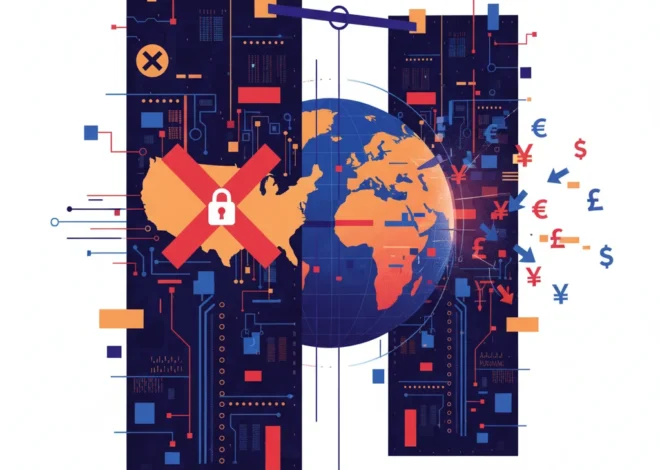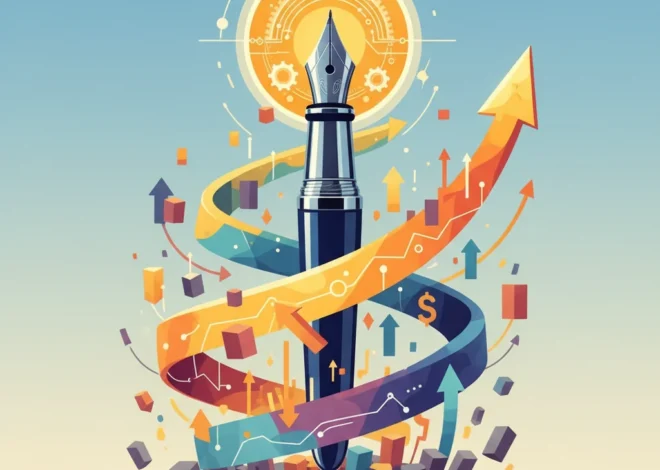
The Mighty Real ROI: How a Disco Anthem Teaches a Masterclass in Financial Technology and Strategic Pivots
The Unlikely Anthem of Business Transformation
In the pantheon of disco, few tracks command the same euphoric energy as Sylvester’s 1978 masterpiece, “You Make Me Feel (Mighty Real)”. It’s a song that feels like pure, unadulterated joy captured on vinyl—a high-energy fusion of soaring falsetto and a relentless, futuristic beat. For many, it’s the definitive sound of an era. Yet, behind this pioneering electronic classic lies a story that offers profound lessons for today’s investors, business leaders, and financial innovators. The track that became a symbol of technological disruption and authentic identity began its life as something entirely different: a slow, gospel-infused piano ballad.
The journey of this song from a heartfelt ballad to a global dance-floor filler is more than just a piece of music history. It’s a perfect case study in the power of the strategic pivot, the disruptive force of new technology, and the immense value of product-market fit. In an economy constantly reshaped by innovation, the story of Sylvester and his signature hit provides a timeless blueprint for navigating change, embracing disruption, and understanding the core principles that drive success in finance, technology, and beyond.
The Initial Public Offering: A Product in Search of a Market
Every great venture starts with a core idea. For Sylvester, a uniquely gifted singer with deep roots in gospel and blues, the original version of “You Make Me Feel” was a raw, personal expression. Co-written with Harvey Fuqua, the initial arrangement was a stripped-down piano and vocal piece, delivered with the soulful fervor of a church testimonial. As recounted by the Financial Times, it was “a mid-tempo gospel-soul number” that showcased his incredible vocal range but remained firmly within a traditional genre (source).
In business terms, this was the initial prototype or the Minimum Viable Product (MVP). It was authentic and possessed immense intrinsic value, but it was not yet optimized for its potential audience. Imagine a brilliant piece of financial technology locked behind a clunky, unintuitive interface, or a groundbreaking investment thesis presented in an inaccessible, academic paper. The core value is there, but the delivery mechanism fails to connect with the broader market. The ballad was a product with a limited addressable market, appreciated by purists but unlikely to ignite the global commercial firestorm it was destined to become.
The Dollar's Next Chapter: Why Washington is Pushing for a More Dollarized World
The Fintech Disruptor: Enter the Synthesizer
The transformation—the pivot—was catalyzed by a technological intervention. Patrick Cowley, a visionary electronic music pioneer working with Sylvester, saw a different potential. He took the gospel-soul ballad and applied the most disruptive technology of the era: the synthesizer. Cowley layered the track with a pulsating, high-speed sequencer line and electronic percussion, fundamentally re-engineering its DNA. This wasn’t just a remix; it was a complete technological overhaul.
This moment is a powerful allegory for the impact of financial technology on the traditional banking and finance sectors. The synthesizer was to 1970s music what blockchain and AI are to modern finance. It introduced a new architecture that enabled greater speed, efficiency, and a completely new user experience. The soulful core (Sylvester’s vocal) remained, but the framework around it was revolutionized.
Consider the evolution from traditional, in-person stock trading to high-frequency algorithmic trading platforms. The fundamental goal—exchanging assets for profit—is the same, but the technology changed the speed, scale, and nature of the entire industry. Cowley’s intervention transformed the song from a piece of analog art into a digital, high-energy asset perfectly suited for the discotheques that were driving youth culture.
Here is a breakdown of this strategic and technological pivot:
| Attribute | Version 1: The Ballad (The “Legacy System”) | Version 2: The Disco Hit (The “Fintech Solution”) |
|---|---|---|
| Core Technology | Acoustic Piano, Traditional Percussion | Synthesizers, Sequencers, Electronic Drums |
| Tempo / Speed | Slow, mid-tempo (approx. 90 BPM) | Fast, high-energy (approx. 132 BPM) |
| Target Market | Gospel, Soul, R&B enthusiasts | Disco, Dance, Pop, LGBTQ+ clubs, Global mainstream |
| Market Fit | Niche, artistically pure | Perfectly aligned with the zeitgeist of the late 1970s dance culture |
| Economic Impact | Modest commercial potential | Global chart success, lasting cultural and financial legacy |
Authenticity as Alpha: The Unquantifiable Asset
Initially, Sylvester was reportedly resistant to the change. He felt the electronic version betrayed the song’s gospel roots. However, he came to embrace it, realizing it amplified the song’s core message of joyous self-expression on a massive scale. Sylvester was an openly gay, gender-fluid, African-American performer in an era when that was revolutionary. His entire persona was built on radical authenticity. The final version of “You Make Me Feel (Mighty Real)” wasn’t just a dance track; it was an anthem of liberation and self-acceptance that resonated deeply with marginalized communities and then crossed over to the mainstream.
This highlights a crucial lesson for modern investing and corporate strategy: authenticity is a powerful economic driver. In today’s transparent, socially-conscious economy, companies with a clear, authentic mission and strong brand identity often outperform their peers. This is the thesis behind the rise of ESG (Environmental, Social, and Governance) investing. Investors are increasingly looking beyond the balance sheet to understand a company’s culture and its “why.” Sylvester’s success was inseparable from his identity. He wasn’t playing a role; the high-energy, liberated sound of the final track was a more accurate reflection of his public persona than the somber ballad. This alignment between product and creator is a form of brand integrity that consumers and investors crave.
The Great Pension Offload: Why Companies Are Rushing to Sell Your Retirement Plan
Enduring Legacy: Lessons for the Modern Stock Market
The success of “You Make Me Feel (Mighty Real)” was monumental. It became a top 10 hit in the UK and a global dance classic. In 2019, it was selected for preservation in the National Recording Registry by the Library of Congress for being “culturally, historically, or aesthetically significant” (source). Its influence can still be heard in electronic music today. The financial and cultural returns on that single strategic pivot have been compounding for over four decades.
So, what are the actionable takeaways for those navigating today’s volatile stock market and complex economics?
- Don’t Be Afraid to Pivot: A great core idea (a strong balance sheet, a talented team) is not enough. Be willing to fundamentally re-engineer the delivery mechanism to meet the market where it is. Clinging to a “piano ballad” in a disco era is a recipe for obsolescence.
- Embrace Technological Disruption: Whether it’s a synthesizer, AI, or a new piece of financial technology, new tools aren’t a threat; they are a lever. The smart money in investing doesn’t bet against technological waves; it finds the innovators who are harnessing them to create new value.
- Product-Market Fit is Everything: The disco version of the song succeeded because it gave the market exactly what it wanted, at the exact right time. Continuous analysis of market trends and consumer behavior is critical. A product or service, no matter how well-conceived, will fail if it doesn’t solve a real problem or fulfill a current desire.
- Authenticity is Your Moat: In a crowded marketplace, a unique and authentic identity can be your strongest competitive advantage. It builds brand loyalty and creates a “realness” that cannot be easily replicated by competitors.
Conclusion: The Sound of Smart Innovation
The story of “You Make Me Feel (Mighty Real)” is a powerful reminder that the greatest returns often come from bold transformations. It teaches us that innovation is not about abandoning a core idea, but about finding the right technology and strategy to unlock its fullest potential. Sylvester and Patrick Cowley took a beautiful, soulful melody and turned it into a cultural and economic phenomenon by embracing the future without losing the essential soul of the original.
For anyone in finance, from the venture capitalist seeking the next unicorn to the CEO steering a legacy institution, the lesson is clear. Look for the “gospel ballads” in your portfolio or organization—the assets with untapped potential. Then, have the courage to find the “synthesizer” that will make them feel mighty real to the rest of the world.


